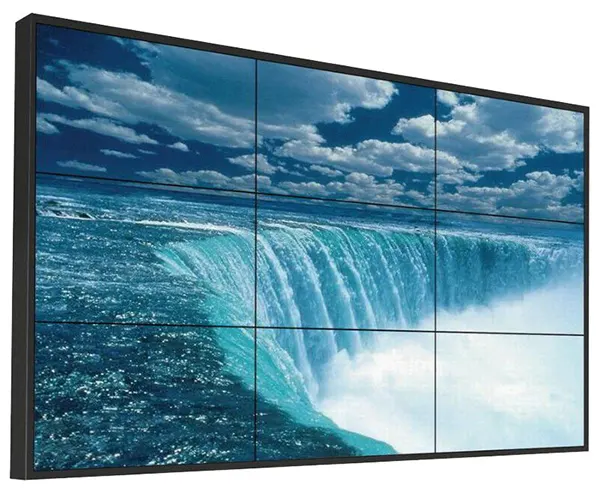LCDs and LEDs have taken the world by storm. These are two basic types of display technologies. Though having the same fundamental structure, they differ a lot. To understand more, let us discuss the difference between these screens.
As we are going to discuss this innovation, we must ponder over the point that:
Are LCD and LED displays the same thing?
LCD stands for “Liquid Crystal Display.” But if you talk about LED, it is “Light Emitting Diodes.” In both cases, the operating system differs in various aspects. LCDs use liquid crystals for their light-modulating properties. These crystals do not emit light. Instead, they use backlighting or reflector to create an image.
But, LEDs use light-emitting diodes. These diodes emit light when the current passes through them.
Following are the significant differences between them:
- Working Principle
- Maintenance
- Manufacturing Cost
- Backlighting
- Effect on our eyes
- Gaming Experience
- Lifespan
Before going into details, I would like you to understand these technologies first.
What is an LCD?
As we have discussed earlier, LCD stands for liquid crystal display. As the name indicates, it uses liquid crystals in its primary form of operation. It is a flat-panel liquid crystal display. These are super-thin technology display screens. Computer screens, TVs, portable video games, and cell phones generally use LCDs.
The display screen has liquid crystals embedded in it. For the illumination of these crystals, there is backlighting. The actual liquid crystal display consists of several layers. It includes a polarizing filter and electrodes.
Liquid crystals do not emit light. Instead, it uses a backlight or reflector to produce images in color or monochrome.

What is an LED display?
LED stands for “light-emitting diode.” In the simplest terms, it is a semiconductor device that emits light. LEDs are flat panel display screens. They use light-emitting diodes as pixels to create an image. Generally, you will see LEDs on advertising billboards, signboards, concerts, etc.
The LED display uses light-emitting diodes to display content. Light emits when an electric current passes through it.
Let’s take a glance at the differentiating points between the two display screens. Then we will discuss them in detail.
| LED | LCD |
| LED stands for Light-emitting diode. | LCD stands for liquid crystal display. |
| LED displays use light-emitting diodes. | LCDs use fluorescent lights. |
| They have light-emitting diodes placed behind the screen. | Fluorescent lights used are usually placed behind the screen. |
| LEDs don’t have mercury. | LCDs have mercury in their fluorescent lamps. Mercury is hazardous to our health. |
| LEDs use light-emitting diodes as a source of backlight. | A Cold cathode fluorescent lamp provides a backlight. |
| The material used in LED is Gallium arsenide phosphide. | The material used is Liquid crystals and glass electrodes. |
| There is no influence of direct current. | Direct current reduces its life span. |

What are the notable differences between LCD and LED displays?
We have mentioned the differences between LCD and LED displays above. Now, I will take you through the differences one by one.
Working Principle:
The main difference between any two electronic appliances is their working principle. We will discuss this fact of both display screens in simple words.
First, let’s take a look at the LCD. It works on the principle of blocking light. It has a reflected mirror at the back, an electrode plane at the top, and a polarized glass at the bottom. When the electric current passes through the molecule, it tends to untwist. This impacts the angle of light and polarizing filter. As a result, little light passes through a particular display screen area. Thus using this principle, the LCD shows the image or picture.
Now, we will discuss the working principle of the LED display. It works on the principle of Electroluminescence. When the electric current passes through the diodes, it causes recombination. The recombination of minority charge carriers and majority charge carriers occurs. This recombination causes the release of energy in the form of photons. The color of light gets appropriated by the energy bandgap of the semiconductor.
Maintenance:
As we now know that LED display consists of lots of light-emitting diodes. If anyone of this diode is making trouble, we can replace it. There is no need to change the entire display. In the case of LCDs, we have fluorescent lamps or bulbs. We have to replace the entire bulb in case of any damage. Thus, it is easier to repair and maintain LED displays than LCDs.
Manufacturing cost:
When extra features add up, so does the manufacturing cost. Since LEDs have way better features than conventional LCDs, they are expensive. As a result, the manufacturing cost of LEDs is higher than the same-sized LCDs.

Backlighting – A principal difference:
Both displays use fluid crystals, but it’s the backlighting where they differ the most. Now, first, you should know what backlighting is. Then we will go deeper into the difference.
Backlighting is the lighting provided from the back of the display screen. It helps the viewers to see what’s on the screen. Now, let’s see how LCD and LED displays differ in backlighting.
LCD Backlighting:
LCDs use CCFL technology for backlighting. CCFL stands for cold-cathode fluorescent lamps. The backside of the screen has fluorescent lamps distributed in even spaces. Thus, they deliver consistent lighting with similar brightness levels. But this technology has a problem. It compromises the versatility of colors.
LED Backlighting:
LED displays use light-emitting diodes. These diodes emit light when the electric current passes through them. LED backlighting has two methods:
Full-array Backlighting:
The entire display screen has light-emitting diodes arranged in zones in full-array LEDs. You can dim each zone of light-emitting diodes. It results in the phenomenon of local dimming. This feature is essential as it helps in improving the picture quality.
Edge Lighting:
In this type of backlighting, the display screen has diodes on the edges. Such LEDs have a thin body. But there is no local dimming. Thus, the picture quality is not that much better. Manufacturers use this technology to achieve cost efficiency.
Which display is better for your eyes?
Your mom would have told you not to stare at the screen for too long in your childhood. Eyestrain is a harmful health risk associated with display screens. Besides, our eyes get painful if we scroll through social media. Blurred visions, headaches, and watery or dry eyes are common problems.
So, which display screen is less harmful to your eyes? I would say LED displays. As we know, LEDs use light-emitting diodes. It has a much wider viewing angle and adjustability. These features increase the user’s comfort so that we can work on the screen for a longer period. Plus, there is no image distortion.
Whereas, LCDs have florescent backlighting and less wide viewing angle. It doesn’t help much to preserve eye health.

Which display has a longer lifespan?
In this debate, LEDs again win the race. On average, the lifespan of an LED display is 100,000 hours compared to 10,000 hours of the LCD. So, all in all, LEDs take the lead in the race.
I would recommend that you should buy LED displays from us. We are a factory specializing in producing LED display screens in Shenzhen. We are striving to provide cost-effective products.


